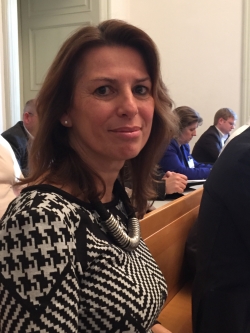Sehr geehrte Leserinnen und Leser
Friedrich Lachmayer, einer der bemerkenswertesten Rechtsgelehrten, die Österreich hervorgebracht hat, hat am 15. Juni 2023 sein achtes Lebensjahrzehnt vollendet. Wie kaum ein anderer hat er in seinem Leben Praxis und Theorie des Rechts miteinander vereint, indem er eine berufliche Laufbahn in der Ministerialbürokratie mit akademischer Lehrtätigkeit verbunden und in beiden Tätigkeitssphären seine reiche Erfahrung und seinen innovativen Geist wirkungsvoll eingesetzt hat. In der akademischen Sphäre ist es guter Brauch, bedeutende Gelehrte zu „runden“ Geburtstagen mit einer Festschrift zu ehren; und so ist der vorliegende Band Friedrich Lachmayer zu seinem 80. Geburtstag gewidmet.
Der Geehrte ist der österreichischen Rechtsgemeinschaft vor allem als „Vater“ des Rechtsinformationssystems des Bundes (RIS) der Republik Österreich bekannt, darüber hinaus aber auch als ein äußerst vielseitiger Gelehrter, dessen Aktivitäten nicht nur die Bereiche des Verfassungsrechts, der Legistik und der Rechtstheorie/-philosophie, sondern insbesondere auch die Visualisierung und die Semiotik im rechtswissenschaftlichen, aber auch im weiteren Kontext umfassen.
Friedrich Lachmayer beschritt seinen eigenständigen intellektuellen Weg bereits während des Studiums, als er sich mit der Frage zu beschäftigen begann, wie man juristische Texte besser verstehen und sich leichter merken könnte, was ihn schließlich zu strukturellen und formalen Notationen im Vorfeld der juristischen Logik (in welcher ihn insbesondere Ota Weinberger und Ilmar Tammelo beeinflusst haben) und weiter zur Visualisierung führte. Dabei entdeckte er für sich eine Metaebene: die Semiotik – die Lehre von den Zeichen –, eine faszinierende Disziplin, die ihn seitdem nicht mehr los ließ.
Nach seiner juristischen Ausbildung war Lachmayer in der Praxis tätig, zunächst in der Finanzprokuratur, später im Verfassungsdienst, wo er 32 Jahre lang arbeitete. In dieser Funktion war er auch mit der Begutachtung von Gesetzentwürfen befasst, was eine intensive Auseinandersetzung mit Legistik und Gesetzgebungstechnik mit sich brachte. Dieser Aspekt seines Praxisbezugs fand ab 2003 seinen Widerhall in den von Friedrich Lachmayer initiierten jährlichen Legistik-Gesprächen, die zunächst in Klagenfurt stattgefunden haben und nunmehr in Linz beheimatet sind; diese Veranstaltungsreihe ermöglicht einen wertvollen Austausch innerhalb der professionellen Gemeinschaft der Legistinnen und Legisten.
Für sein rechtstheoretisches bzw. rechtsphilosophisches Denken war auch die Begegnung mit der Reinen Rechtslehre Hans Kelsens prägend, wenngleich er sich später auch von dieser Lehre emanzipierte, indem er eine thematische Universalisierung in einer das Formale besonders betonenden Normentheorie anstrebte. Diese Bemühungen mündeten schließlich in seine Habilitation an der Universität Innsbruck, wo er sich auf dem Gebiet der Rechtstheorie unter besonderer Berücksichtigung der Gesetzgebungslehre die Lehrbefugnis erwarb.
Nicht zuletzt aber entdeckte Friedrich Lachmayer die neue Welt der Informatik für sich und engagierte sich in verschiedenen EDV-Projekten, in welchen er seine theoretisch fundierte Perspektive auf die Struktur der Rechtsnormen praktisch nutzbar machen konnte. Bereits zu Beginn seiner Tätigkeit im Verfassungsdienst war er an dem damaligen EDV-Versuchsprojekt zum Verfassungsrecht beteiligt, das in Zusammenarbeit zwischen dem Bundeskanzleramt und IBM durchgeführt wurde. Aus den dabei gewonnenen grundsätzlichen Erkenntnissen entwickelte sich später das Rechtsinformationssystem des Bundes (RIS), das bis heute eine wesentliche Grundlage der Rechtsinformation in Österreich darstellt. Wiederum erweiterte Friedrich Lachmayer seine Perspektive auf die Metaebene, nämlich die der Rechtsinformatik. Gemeinsam mit Erich Schweighofer, Dietmar Jahnel, Peter Mader, Maria Stoiber und vielen anderen organisierte er in diesem Kontext ab 1998 das jährlich stattfindende Internationale Rechtsinformatik Symposion in Salzburg (IRIS), eine mittlerweile überaus renommierte Veranstaltung, die Expertinnen und Experten aus aller Welt zusammenbringt, um aktuelle Entwicklungen und Herausforderungen im Bereich der Rechtsinformatik zu diskutieren.
Seine breit gefächerten Interessen und seine Leidenschaft für verschiedene Disziplinen haben Friedrich Lachmayer zu einem Transdisziplinarität verkörpernden Gelehrten gemacht, der in der juristischen Fachwelt und darüber hinaus große Anerkennung und Respekt genießt. Die vorliegende Publikation ist daher eine Hommage an eine außergewöhnliche Karriere und ein bemerkenswertes Engagement. Die darin enthaltenen Beiträge namhafter Expertinnen und Experten versuchen, das breite Spektrum seines Wirkens widerzuspiegeln und einen tieferen Einblick in einige der Themen zu geben, die ihm am Herzen liegen. Von der Rechtsinformatik über die Legistik und die Rechtstheorie bzw. Rechtsphilosophie bis hin zur Visualisierung und Semiotik berühren die thematischen Blöcke dieses Buches daher die vielfältigen Facetten seines Schaffens.
Es ist uns eine große Ehre und Freude, dieses Buch vorlegen zu dürfen, das nicht nur das beeindruckende Werk Friedrich Lachmayers würdigt, sondern auch einen Beitrag zur Erweiterung der Grenzen der Rechtserkenntnis leisten möchte.
Die Herausgeber
Günther Schefbeck, Hanna Maria Kreuzbauer, Meinrad Handstanger
In eigener Sache:
- Die Festschrift ist auch als gedrucktes Buch verfügbar.




 Jusletter IT
Jusletter IT